
Health coverage company Centene (NYSE:CNC) reported Q2 CY2025 results topping the market’s revenue expectations, with sales up 22.4% year on year to $48.74 billion. Its non-GAAP loss of $0.16 per share was significantly below analysts’ consensus estimates.
Is now the time to buy Centene? Find out by accessing our full research report, it’s free.
Centene (CNC) Q2 CY2025 Highlights:
- Lower payments from the government, higher medical costs, more expensive care for Medicaid members
- Revenue: $48.74 billion vs analyst estimates of $43.67 billion (22.4% year-on-year growth, 11.6% beat)
- Adjusted EPS: -$0.16 vs analyst estimates of $0.23 (significant miss)
- Adjusted EBITDA: -$282 million vs analyst estimates of $91.23 million (-0.6% margin, significant miss)
- Operating Margin: -0.9%, down from 3.1% in the same quarter last year
- Free Cash Flow Margin: 3.2%, down from 5% in the same quarter last year
- Customers: 28 million, up from 27.94 million in the previous quarter
- Market Capitalization: $13.32 billion
"We are disappointed by our second quarter results, but we have a clear understanding of the trends that have impacted our performance, and are working with urgency and focus to restore our earnings trajectory," said Chief Executive Officer of Centene, Sarah M. London.
Company Overview
Serving nearly 1 in 15 Americans through its government healthcare programs, Centene (NYSE:CNC) is a healthcare company that manages government-sponsored health insurance programs like Medicaid and Medicare for low-income and complex-needs populations.
Revenue Growth
Examining a company’s long-term performance can provide clues about its quality. Any business can put up a good quarter or two, but the best consistently grow over the long haul. Luckily, Centene’s sales grew at a solid 14.2% compounded annual growth rate over the last five years. Its growth beat the average healthcare company and shows its offerings resonate with customers, a helpful starting point for our analysis.
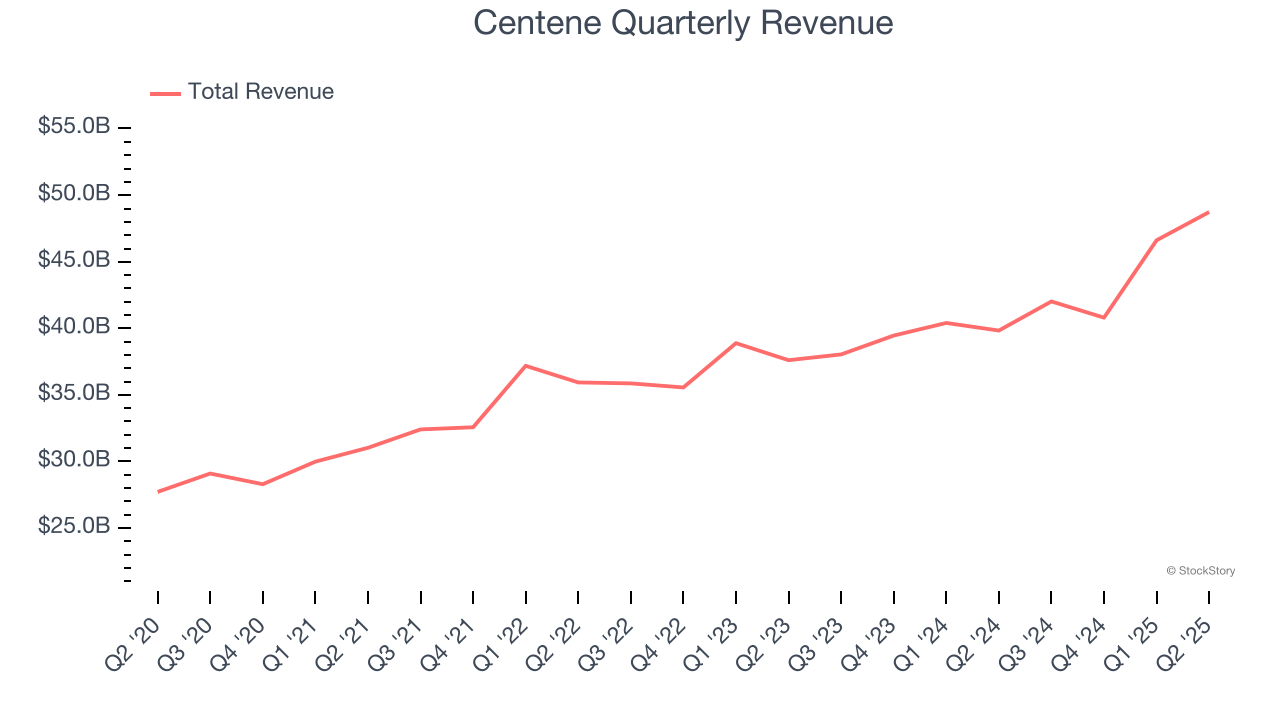
Long-term growth is the most important, but within healthcare, a half-decade historical view may miss new innovations or demand cycles. Centene’s annualized revenue growth of 9.8% over the last two years is below its five-year trend, but we still think the results were respectable. 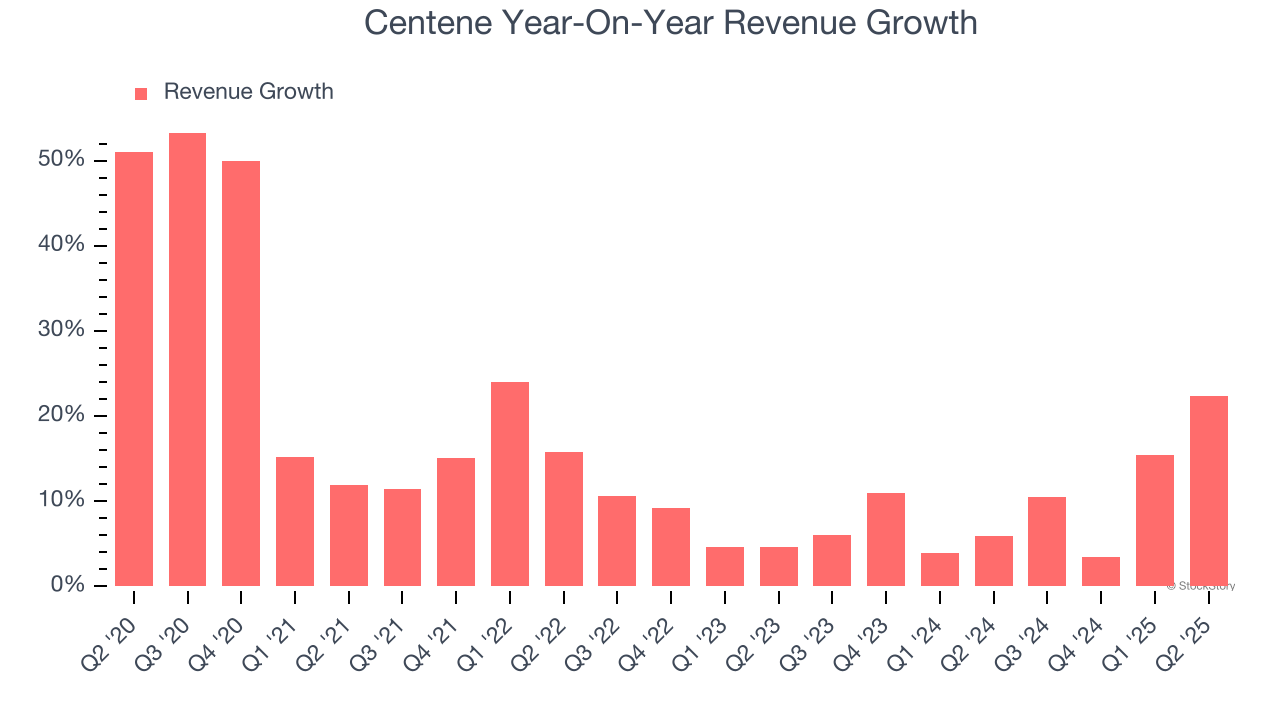
Centene also reports its number of customers, which reached 28 million in the latest quarter. Over the last two years, Centene’s customer base averaged 1.2% year-on-year growth. Because this number is lower than its revenue growth, we can see the average customer spent more money each year on the company’s products and services. 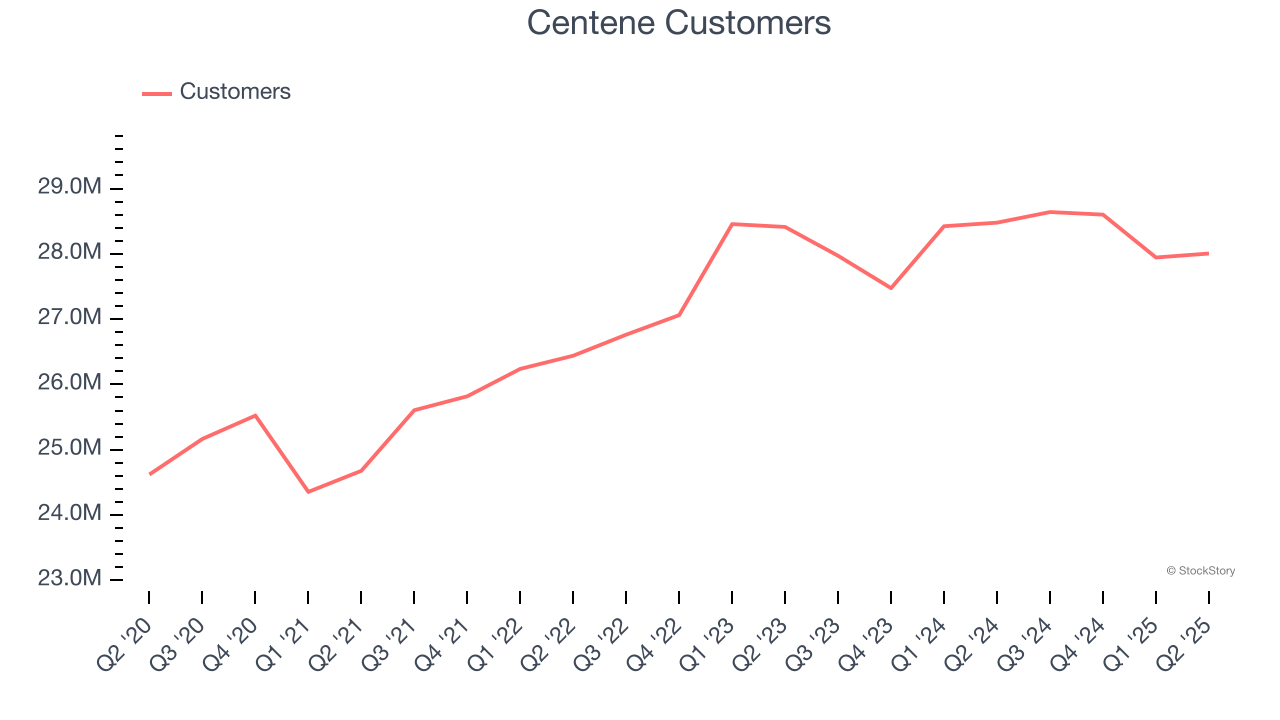
This quarter, Centene reported robust year-on-year revenue growth of 22.4%, and its $48.74 billion of revenue topped Wall Street estimates by 11.6%.
Looking ahead, sell-side analysts expect revenue to remain flat over the next 12 months, a deceleration versus the last two years. This projection doesn't excite us and suggests its products and services will see some demand headwinds. At least the company is tracking well in other measures of financial health.
Today’s young investors won’t have read the timeless lessons in Gorilla Game: Picking Winners In High Technology because it was written more than 20 years ago when Microsoft and Apple were first establishing their supremacy. But if we apply the same principles, then enterprise software stocks leveraging their own generative AI capabilities may well be the Gorillas of the future. So, in that spirit, we are excited to present our Special Free Report on a profitable, fast-growing enterprise software stock that is already riding the automation wave and looking to catch the generative AI next.
Operating Margin
Centene’s operating margin might fluctuated slightly over the last 12 months but has generally stayed the same, averaging 1.5% over the last five years. This profitability was lousy for a healthcare business and caused by its suboptimal cost structure.
Analyzing the trend in its profitability, Centene’s operating margin might fluctuated slightly but has generally stayed the same over the last five years. This raises questions about the company’s expense base because its revenue growth should have given it leverage on its fixed costs, resulting in better economies of scale and profitability.
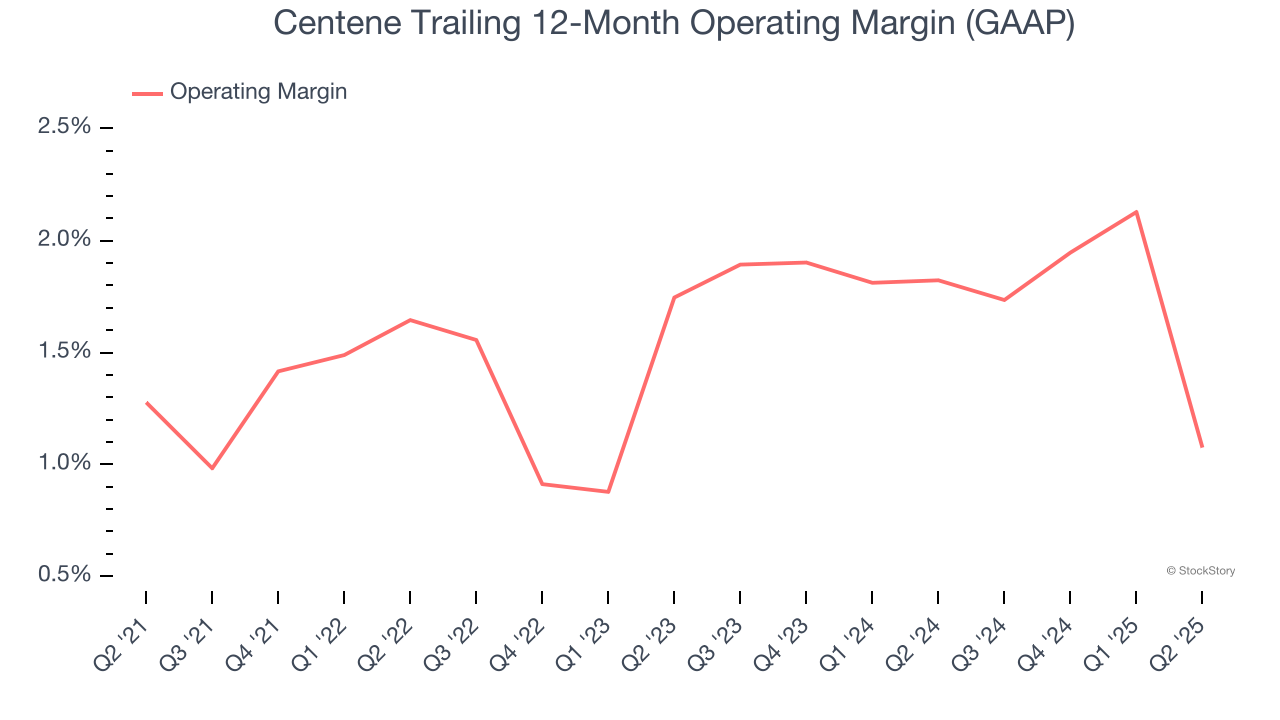
This quarter, Centene’s breakeven margin was down 4 percentage points year on year. This contraction shows it was less efficient because its expenses grew faster than its revenue.
Earnings Per Share
Revenue trends explain a company’s historical growth, but the long-term change in earnings per share (EPS) points to the profitability of that growth – for example, a company could inflate its sales through excessive spending on advertising and promotions.
Centene’s flat EPS over the last five years was below its 14.2% annualized revenue growth. However, its operating margin didn’t change during this time, telling us that non-fundamental factors such as interest and taxes affected its ultimate earnings.
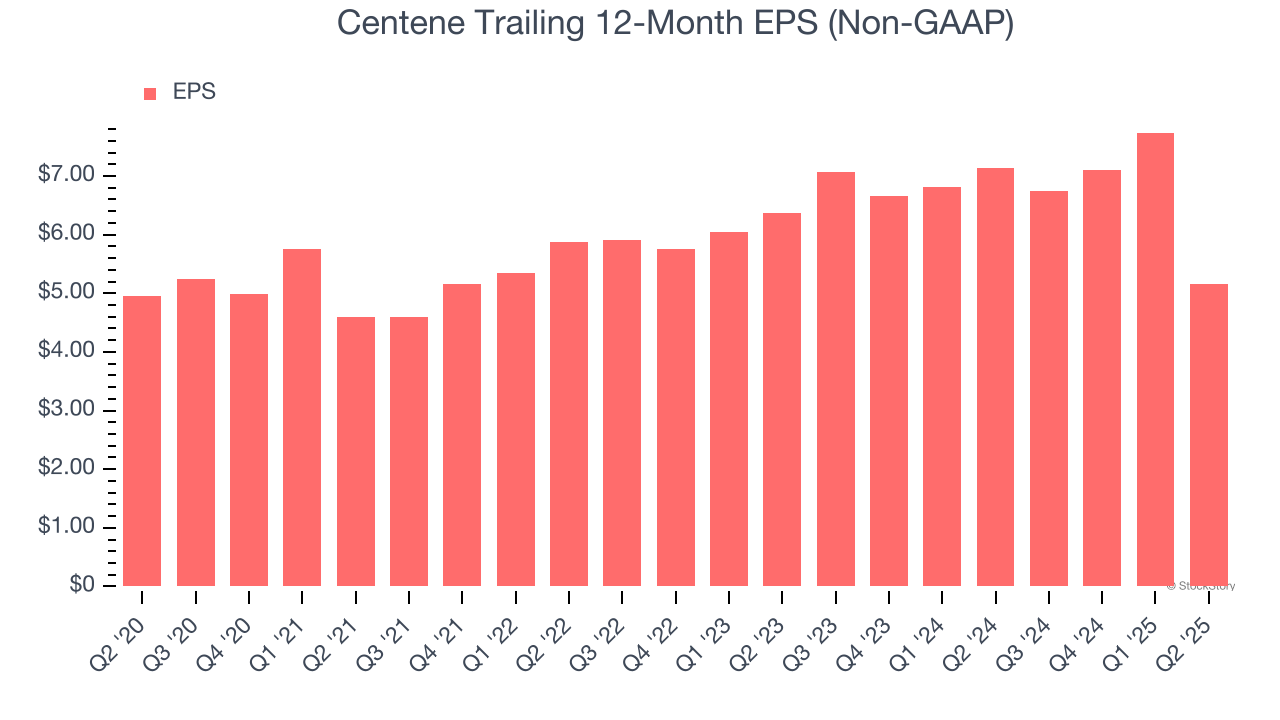
In Q2, Centene reported EPS at negative $0.16, down from $2.42 in the same quarter last year. This print missed analysts’ estimates. Over the next 12 months, Wall Street expects Centene’s full-year EPS of $5.16 to shrink by 24.8%.
Key Takeaways from Centene’s Q2 Results
We liked that Centene beat analysts’ revenue expectations this quarter. On the other hand, EPS missed significantly due to lower payments from the government, higher medical costs, more expensive care for Medicaid members. Management called the results "disappointing" and are addressing the issues in the business. Shares traded down 12.2% to $23.51 immediately following the results.
Should you buy the stock or not? The latest quarter does matter, but not nearly as much as longer-term fundamentals and valuation, when deciding if the stock is a buy. We cover that in our actionable full research report which you can read here, it’s free.
